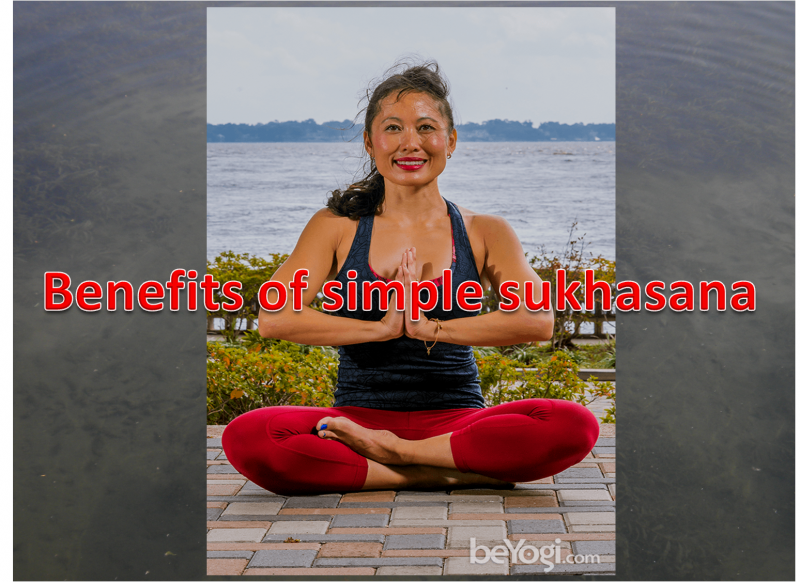
Easy Pose: Sukhasana
Easy pose or Sukhasana is everyday pose for all. It is a beautiful, easy pose and has many benefits. It increases flexibility of leg muscles, maintains healthy curve in the lumbar spine, improves circulation in lower part of the body and it relaxes and gives positive state to mind. Sitting in easy pose daily for 15 to 30 minutes is good for health and this practice reduces the problem of siting on sitting on floor or getting up from the floor – Healthylife.werindia.com
Sanskrit: Sukhasana, (suk-HAS-anna), sukha = comfort, happiness, ease
BENEFITS
- Calms the brain and reduces anxiety
- Begins to open the hips for yoga practice
- Stretches the knees and ankles
- Strengthens the back
- Relieves mental and physical fatigue
CONTRAINDICATIONS
- Knee injury
- Ankle injury
- Hip injury
HOW TO
- Sit down on your mat with your legs extended in front of you in Dandasana (Staff pose).
- Bend your knees and cross your legs inward, crossing one shin in front of the other.
- Relax your feet so the outer edge of each foot is resting on the ground. Maintain a slight gap between your pelvis and your feet.
- Bring your right hand to your right knee, and left hand to left knee.
- You can rest your hands here with your palms facing down, join the palms together in prayer, or position them in Gyan Mudra. (For the latter, touch your index finger to your thumb, and extend your middle, ring, and pinky fingers).
- Close your eyes. Ground your sitting bones down and reach through the crown of your head to lengthen the spine.
- Hold this pose for 3-5 minutes, allowing your mind to become centered. Uncross your legs and repeat with the opposite shin forward.
MODIFY OR REPLACE
Alternatives:
- Ardha Padmasana (Half Lotus)
- Padmasana (Full Lotus)
Modifications:
- Sit on a block or a blanket to raise your pelvis above your knees.
- Sit with your back to a wall to help lengthen your spine.
SEQUENCING TIPS
- Sukhasana is typically included at the beginning or end of a sequence.
- It may be utilized for a brief meditation after Shavasana (Corpse pose).
TEACHING CUES
- Ideally, your pelvis should be higher than your knees. If your hips are tight, sit on a blanket or block.
- Lengthen your spine through the crown of your head, keeping your chin parallel to the ground.
- Focus on the breath, letting go of whatever you did before practice or whatever you need to do after. Go inside.
VARIATIONS
- Ardha Padmasana (Half Lotus)
- Padmasana (Full Lotus)
- Baddha Konasana (Bound Angle pose)
WATCH OUT FOR
- Leaning too far in one direction
- Fidgeting
- Rounding the back
- Overstretching the knees or ankles
Reference: This article with image is published with permission from https://beyogi.com/
Author: HealthyLife | Posted on: February 26, 2021
« Sage Koundinya Pose II Improve Balance and Coordination by practicing Half moon pose »






















Write a comment